By Betty Struckhoff
I hope some of you enjoyed Ed’s recent post of Wildflowers in Snow as much as I did. If you would like to try some new stumpers, here are photos I took on January 9, 2014.
I will admit that I would be stumped by some of these if I hadn’t taken the pictures. If you can get three or four right, I think you’re doing well. I’ll post the answers next Sunday, Jan. 19.
There’s always something going on in the garden!
- Snow Mystery #1
- Snow Mystery #2
- Snow Mystery #3
- Snow Mystery #4a
- Snow Mystery #4b
- Snow Mystery #5
- Snow Mystery #6
- Snow Mystery #7
- Snow Mystery #8a
- Snow Mystery #8b
- Snow Mystery #9
- Snow Mystery #10
- Snow Mystery #11
- Snow Mystery #12
- Snow Mystery #13
- Snow Mystery #14a
- Snow Mystery #14b
- Snow Mystery #15
- Snow Mystery #16

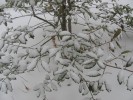
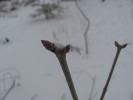

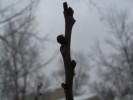

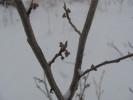
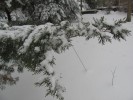
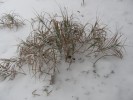

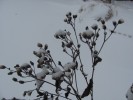
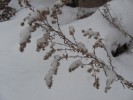
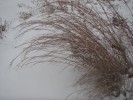
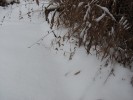

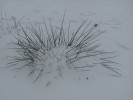
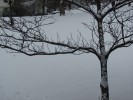
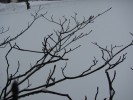
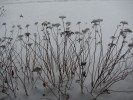
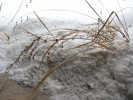

You’re making this difficult! 🙂 Here are my guesses:
1. American Holly
2. Buckeye
3. ??
4. Sumac
5. Witch hazel
6. Eastern red-cedar
7. ??
8. Aster (New England?)
9. Goldenrod
10. Little bluestem
11. River oats
12. Ash
13. ??
14. Dogwood
15. ??
16. ??
Thanks Betty.
The witch hazel should be blooming soon.
I agree with Brian. The tree with the smoother bark might be tulip poplar.
Kathy Bildner
1. American Holly
2. Red Buckeye
3.
4.
5. Ozark Witch Hazel, Hamamelis vernalis
6.
7. Palm Sedge
8.
9
10. Little Bluestem
11. River Oats
12. Hackberry
13.
14a. Pagoda Dogwood, Cornus alternifolia
15. Wild Hydrangea
16. River Oats
1. American holly
2
3. witchhazel
4
5 wahoo
6 Eastern red cedar
7 palm sedge
8 iroweed
9
10. little bluestem
11. river oats
12
13 a sedge or rush
14 dogwood
15 hydrangea
16
OK, here are the answers:
1. American Holly –Ilex opaca. At least I think that’s what this volunteer is. It’s native to the very southern part of the state.
2. Red Buckeye — Aesculus Pavia. I just love when the big, gorgeous compound leaves unfurl in the spring.
3. Downy Skullcap — Scutellaria incana. The stumper. A gift from the birds under my Hickory tree. Its purple flowers brighten up a very shady spot in summer. Scutellaria means “small disk:, describing what’s left of the flower in winter.
4. Paw Paw — Asimina triloba. I love the smooth bark and have successfully forced the blooms indoors in early spring.
5. Ozark (or Spring) Witchhazel — Hamamelis vernalis. Yes, this will be blooming in a few weeks. The flowers feed an early hatching fly and I suppose their larvae feed the birds in spring. The cycle begins anew!
6. Red Cedar — Juniper virginia. The best bird plant in our yard. The path between it and our feeders is very well beaten.
7. Palm Sedge — Carex muskingumensis. Great year round foliage
8. Ironweed — Veronia spp. Maybe Ed remembers the seedhead from the Wild Ones meeting in Maplewood some years ago. I just love the tawny color, like a deer’s coat. The deep purple flower is beautiful, especially when contrasted with a Tiger Swallowtail.
9. Showy Goldenrod — Solidago speciosa. A great flower to feed the migrating monarchs and this species doesn’t get so tall.
10. Little Bluestem — Schizachyrium scoparium. I believe it was James Trager who pointed out the lovely apricot color in winter at a Wild Ones tour of Glenda’s place near Pacific.
11. River Oats — Chasmanthium latifolium. Aggressive in moist shade but a lovely winter plant nevertheless.
12. Ash — Fraxinus spp. I believe this is a Green Ash. I read that our very cold temps could kill a lot of Emerald Ash borer larvae. Let’s hope!
13. Soft Rush — Juncus effuses. Wonderful evergreen texture plant.
14. Pagoda Dogwood — Cornus alternifolia. Still my favorite four-season plant. Note the alternate branching.
15. Native Hydrangea — Hydrangea aborescens.
16. American Beakgrain — Diarrhena obovata. I planted this by the front porch for winter interest. The jury’s still out. It hasn’t filled in much in the shade and flops in the winter. But I do love the look in summer.
One final thought. Of these 16 plants only three are “wildflowers.” Grasses, sedges, shrubs and trees do look more interesting in winter. By planting them we’ll be enjoying our landscape in all seasons and also creating more diversity for nature’s web.